Contents
- Waterproofing Balcony Surfaces
- The Risks of Water Damage
- Choosing the Best Waterproofing Solutions
- Installation and Works
- Tactics and Considerations
- Protecting Your Outdoor Space
- Moisture and Water Damage
- Installing the Polyguard Polyflow® 18 Drainage Mat
- Why Choose Polyguard Polyflow® 18 Drainage Mat?
- How to Install Polyguard Polyflow® 18 Drainage Mat
- Preparing the Surface
- 1. Assess the Substrate
- 2. Clean the Surface
- 3. Seal Cracks and Joints
- 4. Apply Primer
- 5. Install Flashings
- 6. Install a Drain System
- Applying the Polyguard Polyflow® 18 Drainage Mat
- Why is drainage important?
- How does the Polyguard Polyflow® 18 Drainage Mat work?
- How to apply the Polyguard Polyflow® 18 Drainage Mat?
- The benefits of using the Polyguard Polyflow® 18 Drainage Mat
- “
Contents
- Waterproofing Balcony Surfaces
- The Risks of Water Damage
- Choosing the Best Waterproofing Solutions
- Installation and Works
- Tactics and Considerations
- Protecting Your Outdoor Space
- Moisture and Water Damage
- Installing the Polyguard Polyflow® 18 Drainage Mat
- Why Choose Polyguard Polyflow® 18 Drainage Mat?
- How to Install Polyguard Polyflow® 18 Drainage Mat
- Preparing the Surface
- 1. Assess the Substrate
- 2. Clean the Surface
- 3. Seal Cracks and Joints
- 4. Apply Primer
- 5. Install Flashings
- 6. Install a Drain System
- Applying the Polyguard Polyflow® 18 Drainage Mat
- Why is drainage important?
- How does the Polyguard Polyflow® 18 Drainage Mat work?
- How to apply the Polyguard Polyflow® 18 Drainage Mat?
- The benefits of using the Polyguard Polyflow® 18 Drainage Mat
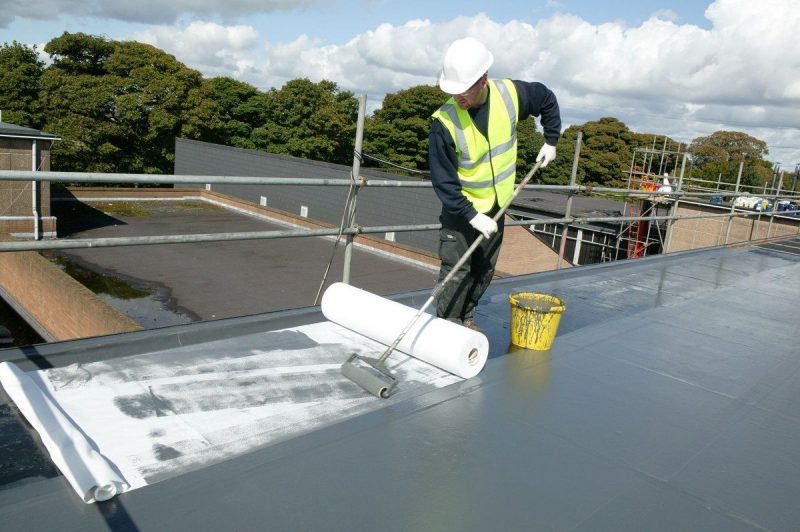
When it comes to balconies and outdoor spaces, there is always a risk of moisture and water damage. Within a short period of time, these issues can lead to serious structural problems, not to mention the potential health hazards they pose. Therefore, it is essential to take the necessary precautions to protect your balcony surfaces from these harmful elements.
One of the most effective tactics for waterproofing balcony surfaces is by using liquid membranes. There are various options available in the market, but one of the best choices is Mariseal. This high-quality polyurethane (PU) membrane offers excellent protection and durability, guaranteeing a long-lasting solution for your outdoor space.
Before applying the liquid membrane, however, there are a few important steps that need to be followed. First, ensure that the balcony surface is clean and free from any dust, dirt, or loose materials. Next, inspect the condition of the substrate and make any necessary repairs. It is vital to remove any old membranes or coatings that may be present, as well as any damaged wood or rotten areas.
Once the surface is prepared, the liquid membrane can be applied using a roller or brush. It is essential to ensure a continuous and even application, paying extra attention to the edges, flashings, and areas where movement is expected. A primer may be needed depending on the condition of the substrate. For further protection, a second coat can be applied after the first one has dried.
In addition to liquid membranes, there are other options available for waterproofing balcony surfaces. One option is to install a waterproofing membrane under the flooring or on the walls. Another option is to use a waterproofing adhesive on the edges and around any access points. Installing an awning or shade above the balcony can also help protect it from rain and direct sunlight.
When choosing materials for balcony waterproofing projects, it is important to consider the risks involved. Avoid using solvents or aromatic products that may emit hazardous fumes. Opt for eco-friendly and low VOC options instead. Polyguard products, for example, offer an excellent fit for balcony waterproofing, keeping both the environment and your health in mind.
In conclusion, ensuring proper waterproofing for your balcony surfaces is an essential part of maintaining the condition and longevity of your outdoor space. By using high-quality materials and following the recommended procedure, you can protect your balcony from moisture and water damage, guaranteeing a safe and enjoyable outdoor area for years to come.
Waterproofing Balcony Surfaces
In the realm of outdoor construction projects, waterproofing balcony surfaces is of utmost importance. Balconies, being exposed to the elements, are particularly vulnerable to moisture and water damage. Therefore, implementing effective waterproofing solutions is crucial to protect these areas and ensure their longevity.
The Risks of Water Damage
Water damage can have detrimental effects on balconies, leading to costly repairs and potential safety hazards. When moisture seeps into cracks and gaps within the balcony substrate, it can weaken the structural integrity and compromise the stability of the entire area. Additionally, water infiltration can result in the growth of mold and mildew, which not only affects the aesthetics but also poses health risks to residents.
Choosing the Best Waterproofing Solutions
When it comes to waterproofing balcony surfaces, it is essential to select the best materials and methods to ensure effective protection. Some common solutions include the use of membranes, paints, and sealants. Membranes, such as the Balconyguard waterproofing membrane, offer excellent resistance to water and provide a durable barrier against moisture. Paints and sealants can also be used, but they may require continuous maintenance and reapplication to remain effective.
Installation and Works
The installation process for waterproofing balcony surfaces typically involves several steps. Firstly, any existing floor coverings or finishes need to be removed to expose the substrate. Next, cracks, gaps, and other defects in the balcony surface should be repaired to create a smooth and even substrate. After that, a primer is applied to enhance adhesion, followed by the installation of the waterproofing membrane or the application of paint or sealant. Finally, flashings and tape are used to ensure a watertight seal around areas prone to water leaks.
Tactics and Considerations

Before starting a waterproofing project on balconies, there are several important considerations to keep in mind:
- Know the specific requirements and regulations for balcony waterproofing in your area.
- Ensure proper ventilation during the installation process to avoid exposure to harmful solvents.
- Work in well-ventilated areas or use personal protective equipment, such as respirators, to minimize health risks.
- Consider using low-odor and low-VOC (volatile organic compounds) products to prevent unpleasant odors and potential health issues.
- Remove any loose materials and ensure a clean and dry substrate before applying waterproofing solutions.
By following these tactics and taking necessary precautions, waterproofing balcony surfaces can greatly reduce the risks of moisture damage and ensure the long-term safety and durability of outdoor spaces.
Protecting Your Outdoor Space
Properly waterproofing your outdoor space is essential to ensure the longevity and safety of your balcony surfaces. Without proper protection, water and moisture can penetrate the structure of your building, leading to potential damage and costly repairs. To protect your outdoor space, you need to know how to waterproof it effectively.
One of the best means of waterproofing balcony surfaces is by using waterproofing membranes. These membranes are continuous coatings that seal off any areas where water may be able to penetrate. They can be applied on the floor, walls, and even the corners of your balcony, making sure everything is fully waterproofed.
There are various waterproofing products available in the market, such as Polyguard 650 or Polyflow® PW™ Methacrylate. These products create a liquid-applied waterproofing solution that can be easily applied on both wet and dry surfaces. Applying these products involves a simple procedure of priming the surface, followed by applying the waterproofing liquid using a brush or roller.
It is important to ensure that the balcony surface is clean and free from any debris before applying the waterproofing solution. This will ensure the best adhesion and longevity of the waterproofing membrane. Additionally, any cracks or gaps in the balcony surface should be filled and repaired prior to applying the waterproofing product.
Another important aspect of waterproofing balcony surfaces is ensuring proper drainage. Without adequate drainage, water can pool on the balcony, leading to potential leaks and water damage. Installing a drain at the lowest point of the balcony and creating a slope towards it will allow water to easily exit the balcony and prevent any pooling.
In some cases, installing a drain mat may be necessary to enhance the drainage system. A drain mat is a versatile and easy-to-install product that can be placed underneath the waterproofing membrane. It provides an additional layer of protection against water and helps to channel any excess moisture away from the balcony surface.
When working on waterproofing balcony surfaces, it is important to consider any movement of the building or the balcony structure. Balconies can shift or settle over time, which can cause cracks or gaps in the waterproofing membrane. To accommodate this movement, it is recommended to use flexible waterproofing products that can withstand the stresses without compromising the integrity of the waterproofing system.
If you are not experienced in waterproofing, it is best to hire a professional contractor to handle the job. They have the expertise and knowledge to ensure that your balcony surfaces are properly waterproofed, reducing the risks of potential leaks and water damage. However, if you choose to do it yourself, make sure to follow the recommended sequence and usage instructions provided by the waterproofing product manufacturer.
In conclusion, keeping your outdoor space protected from moisture and water damage is essential. Properly waterproofing your balcony surfaces involves using effective products, ensuring proper drainage, and considering any movement of the building. By following these steps, you can create a safe and waterproofed outdoor space for your enjoyment.
Moisture and Water Damage

When it comes to balconies and terraces, moisture and water damage can be a serious issue. If not properly addressed, these outdoor spaces can suffer from leaks, cracks, and other forms of damage that can not only be costly to repair, but also pose safety risks to residents and visitors.
One of the most vital parts of any balcony waterproofing project is the drainage system. Water should be directed away from the balcony surface and towards an exit point to prevent pooling and potential water damage. This can be achieved through the use of high-density polyethylene drains, such as the PW™ system, which ensures efficient water flow and helps keep the balcony surface safe and dry.
Another important aspect of waterproofing balconies is the use of sealant and adhesive products. These materials play a crucial role in ensuring that there are no gaps or openings where water can penetrate the balcony surface. Products like Mariseal® and Maris Polymers® offer excellent sealing properties and can be applied on various surfaces such as concrete, stone, wood, and even metal.
Furthermore, proper preparation of the balcony surface prior to applying sealant is also crucial. This includes thorough cleaning, repairing any cracks or defects, and applying a primer if necessary. A primer not only enhances adhesion but also improves the overall durability of the waterproofing system.
When working on balcony waterproofing projects, it’s important to pay attention to detail. This means ensuring that all joints, corners, and areas where different materials meet are properly sealed and waterproofed. The use of flashing, tape, and boot seals can help achieve this and provide added protection against moisture and water damage.
For balconies and terraces where wood is the primary material, it is essential to use waterproofing solutions specifically designed for timber. Products like BalconyGuard™ and SSL Wood & Concrete® provide excellent protection against moisture and water damage, ensuring the longevity of the wood and the overall safety of the balcony.
In conclusion, preventing moisture and water damage is crucial to maintaining the integrity and safety of balcony surfaces. Proper drainage, sealant and adhesive products, as well as attention to detail, are all important factors that should be considered when working on balcony waterproofing projects. By using high-quality materials and following best practices, you can ensure that your balcony remains safe and free from any potential water-related issues.
Installing the Polyguard Polyflow® 18 Drainage Mat
When waterproofing balcony surfaces, it is important to consider the installation of a drainage mat. The Polyguard Polyflow® 18 Drainage Mat is a high-density, cold-applied drainage mat that is a great solution for keeping your outdoor space safe from moisture and water damage.
Why Choose Polyguard Polyflow® 18 Drainage Mat?
The Polyguard Polyflow® 18 Drainage Mat works by creating a safe, waterproof barrier between your balcony floor and the underlying structure. It is specifically designed to allow water to flow away from the balcony surface, preventing water from pooling or causing damage to the underlying structure.
By installing Polyguard Polyflow® 18 Drainage Mat, you can greatly reduce the potential risks of leaks and cracks in your balcony area. It also helps to prevent water from seeping into the surrounding walls, making it an ideal solution for both new construction projects and existing buildings.
How to Install Polyguard Polyflow® 18 Drainage Mat
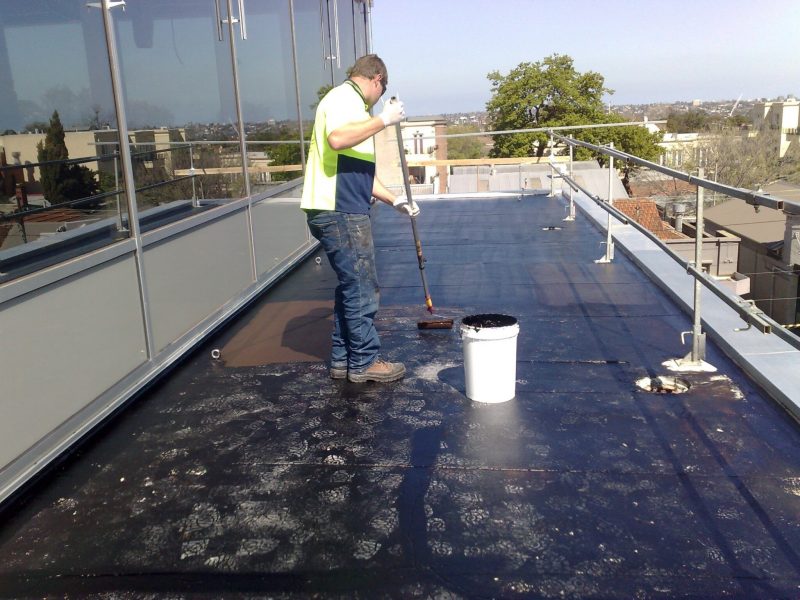
Installing Polyguard Polyflow® 18 Drainage Mat is a straightforward process that can be easily done by both professionals and do-it-yourselfers. Here is a step-by-step guide:
- Prior to installation, ensure that the balcony surface is clean and free from any debris.
- Roll out the Polyguard Polyflow® 18 Drainage Mat over the entire balcony area, ensuring that it covers the entire surface.
- Overlap the edges of the drainage mat by a minimum of 2 inches to ensure a seamless installation.
- If there are any existing cracks or potential leak points on the balcony surface, seal them with Polyguard LM-85 or PW™ 105 prior to installing the drainage mat.
- Apply a waterproofing solution, such as Polyguard 650 BD or a similar product, to the balcony surface within the drainage mat area.
- Install any necessary flashing details, such as at door thresholds or balcony edges, to ensure a watertight seal.
- Next, install the balconies or awning structure over the drainage mat, ensuring that it is securely anchored to the underlying balcony floor.
- Finally, test the waterproofing system by pouring water onto the balcony surface and checking for any signs of leakage. Make any necessary adjustments or repairs if needed.
By following these installation steps, you can ensure a reliable and effective waterproofing solution for your balcony.
Installing the Polyguard Polyflow® 18 Drainage Mat is a vital step in protecting your balcony from moisture and water damage. It not only helps to keep your outdoor space safe but also prolongs the life of your balcony floors. For more information or for assistance with your waterproofing needs, please contact our team at [Company Name]. We are here to provide you with the best solutions for your waterproofing projects.
Preparing the Surface
Before you install a waterproofing system on your balcony, it is essential to properly prepare the surface to ensure a successful and long-lasting installation. Here are some key steps to follow:
1. Assess the Substrate

The first step is to evaluate the condition of the balcony’s substrate. If your balcony is made of wood, check for any rot, decay, or moisture damage. In such cases, repairs or replacement may be necessary to ensure a strong and stable foundation.
For concrete or masonry balconies, inspect the surface for any cracks, efflorescence, or other signs of damage. Treat any existing issues before proceeding further.
2. Clean the Surface
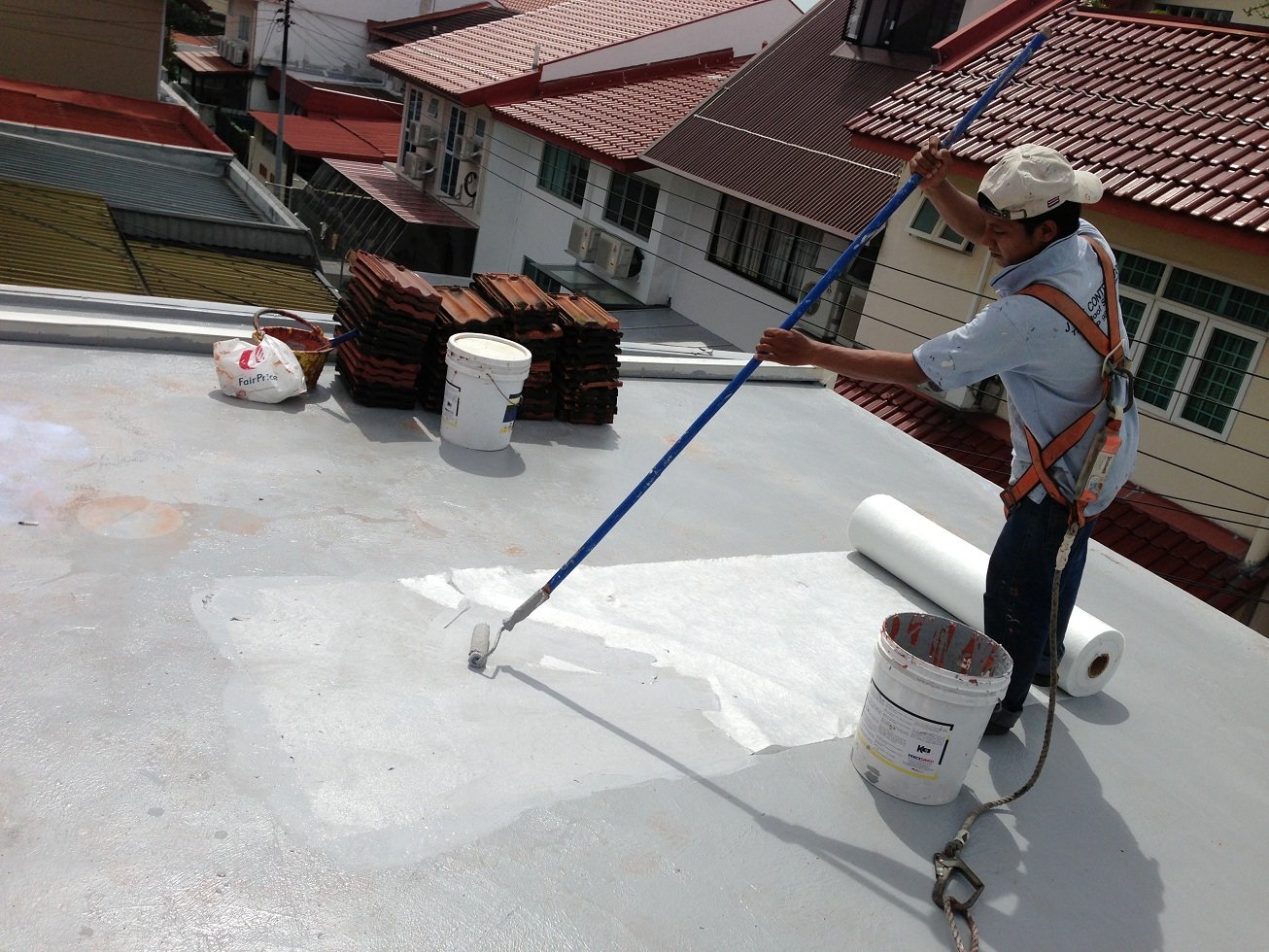
Thoroughly clean the balcony surface to remove any dirt, debris, or loose materials that may affect the adhesion of the waterproofing membrane or coating. Use a broom, pressure washer, or a combination of both to achieve a clean, dry substrate.
3. Seal Cracks and Joints
Next, seal any cracks, joints, or gaps in the surface to prevent water intrusion. Use an appropriate sealant or caulk designed for outdoor use. Pay close attention to critical areas such as the balcony-to-wall connection and any pipe or railing penetrations.
4. Apply Primer
Applying a primer before installing the waterproofing system can enhance adhesion and increase the longevity of the waterproofing membrane or coating. Choose a primer that is compatible with the waterproofing material you will be using.
5. Install Flashings
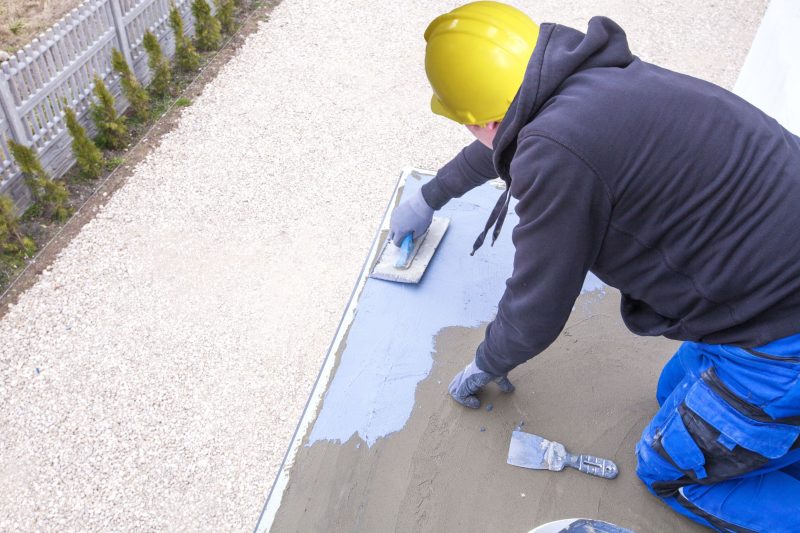
Flashings are essential for keeping water out and ensuring a watertight seal around doors, windows, and other vulnerable areas. Install flashing tape or metal flashings as per the manufacturer’s instructions to provide extra protection against moisture intrusion.
6. Install a Drain System
A properly functioning drain system is crucial to prevent water buildup on the balcony surface. Install an appropriate drainage system that allows for the efficient exit of water, keeping your balcony dry and free from potential water damage.
In conclusion, thorough preparation is vital when waterproofing your balcony surface. By following these steps and using the best waterproofing products and techniques, you can ensure a long-lasting and effective solution to protect your outdoor space from moisture and water damage.
Applying the Polyguard Polyflow® 18 Drainage Mat
When it comes to waterproofing balcony surfaces, the Polyguard Polyflow® 18 Drainage Mat is the best option among other solutions. This stone-like product works without a typical 5% water content so it will not leave any unpleasant odors or cause nausea. It is vital to choose the right drainage mat for your balcony projects, especially if the balcony is located above living or occupied spaces.
Why is drainage important?
Proper drainage is vital when it comes to waterproofing balcony surfaces. The Polyguard Polyflow® 18 Drainage Mat helps to effectively drain water off the balcony, preventing it from pooling and causing any potential leaks or water damage. This is especially important in areas where heavy rainfall is common or where the balcony is located on an upper floor.
How does the Polyguard Polyflow® 18 Drainage Mat work?
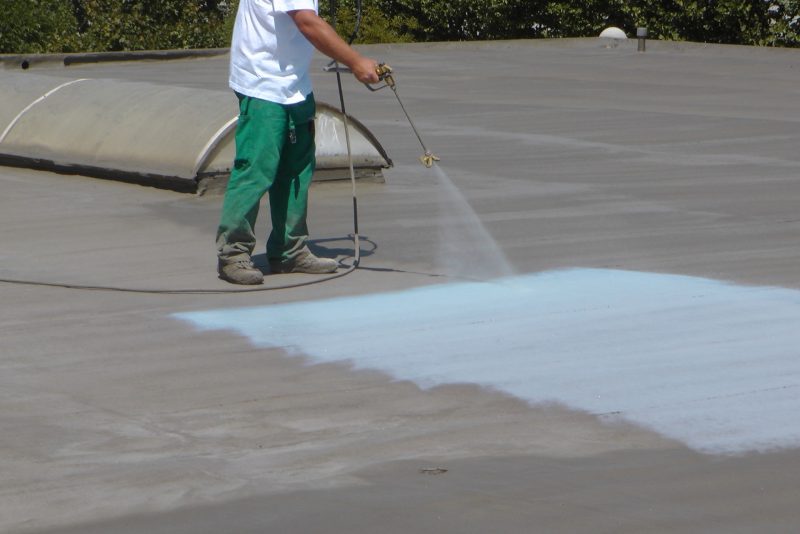
The Polyguard Polyflow® 18 Drainage Mat is a companion product to the Polyguard Balconyguard™ and 650 Waterproofing Membrane systems. It is designed to be installed underneath the Balconyguard™ or 650 Waterproofing Membrane, providing an extra layer of protection against water intrusion. The mat is placed over the existing balcony surface before the waterproofing membrane is applied. This allows any water that seeps through the membrane to be directed towards the drains, ensuring that it does not accumulate on the surface.
How to apply the Polyguard Polyflow® 18 Drainage Mat?
Prior to installing the drainage mat, make sure the balcony surface is clean and free from any debris. The Polyguard Polyflow® 18 Drainage Mat can be easily cut to fit the size and shape of your balcony. Lay the mat over the balcony surface, making sure the edges overlap by at least 6 inches. Secure the mat with adhesive or mechanical fasteners to ensure it stays in place.
Next, install the drainage mat around drains and other openings by cutting slits or holes in the mat to allow water to flow freely towards the drains. The Polyguard Polyflow® 18 Drainage Mat can also be used in corners and along the edges of the balcony to ensure complete coverage and effective drainage.
The benefits of using the Polyguard Polyflow® 18 Drainage Mat
The Polyguard Polyflow® 18 Drainage Mat offers several advantages for waterproofing balcony surfaces:
- Excellent drainage: The mat effectively directs water towards drains, preventing pooling and potential leaks.
- Compatibility with other Polyguard products: The Polyflow® 18 Drainage Mat works seamlessly with the Balconyguard™ and 650 Waterproofing Membrane systems, guaranteeing a watertight seal.
- Durable and long-lasting: Made from high-quality materials, the mat is designed to withstand weathering and resist damage from foot traffic.
- Cost-effective: Using the Polyflow® 18 Drainage Mat can help you save on costly repairs and water damage in the long run.
- Easy installation: With its simple installation process, you can easily apply the drainage mat yourself, saving time and money on professional labor.
When it comes to protecting your balcony from moisture and water damage, choosing the right waterproofing solutions is important. The Polyguard Polyflow® 18 Drainage Mat, along with other Polyguard products, provides the best option for ensuring a waterproof and long-lasting outdoor space.
“
What is the purpose of waterproofing balcony surfaces?
The purpose of waterproofing balcony surfaces is to protect the outdoor space from moisture and water damage. Balconies are exposed to the elements, including rain and snow, and without proper waterproofing, water can seep into the surface and cause damage over time.
How does waterproofing balcony surfaces work?
Waterproofing balcony surfaces typically involves applying a waterproofing membrane or coating to the surface. This membrane forms a barrier that prevents water from penetrating the balcony and causing damage. It is important to choose a high-quality waterproofing product that is specifically designed for outdoor use and is able to withstand the elements.
What are the benefits of waterproofing balcony surfaces?
Waterproofing balcony surfaces offers several benefits. Firstly, it helps to extend the lifespan of the balcony by preventing water damage. It also helps to maintain the structural integrity of the balcony by reducing the risk of rot and mold growth. Additionally, waterproofing creates a more comfortable and enjoyable outdoor space that can be used year-round, even during wet weather.
Can I waterproof my balcony surface by myself?
While it is possible to waterproof your balcony surface yourself, it is usually recommended to hire a professional for this task. Waterproofing can be a complex process that requires knowledge and expertise to ensure proper application and effectiveness. A professional will have the necessary tools and experience to do the job correctly and provide long-lasting results.
What is Polyguard Detail Tape and how does it help in waterproofing balcony surfaces?
Polyguard Detail Tape is a type of waterproofing tape that is specifically designed to seal and protect the details and vulnerable areas of balcony surfaces. It is a self-adhesive tape that is easy to apply and provides an effective barrier against water. Polyguard Detail Tape is often used in conjunction with a waterproofing membrane or coating to enhance the overall waterproofing system and ensure long-term protection for the balcony.


 Enhance Your Home’s Appeal and Functionality with Sliding Glass Balconies
Enhance Your Home’s Appeal and Functionality with Sliding Glass Balconies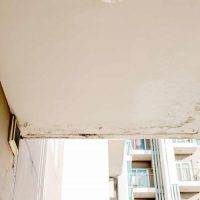 Complete Step-by-Step DIY Guide for Repairing a Leaking Balcony
Complete Step-by-Step DIY Guide for Repairing a Leaking Balcony Step-by-Step Guide – How to Replace Broken Glass in a Patio Door
Step-by-Step Guide – How to Replace Broken Glass in a Patio Door